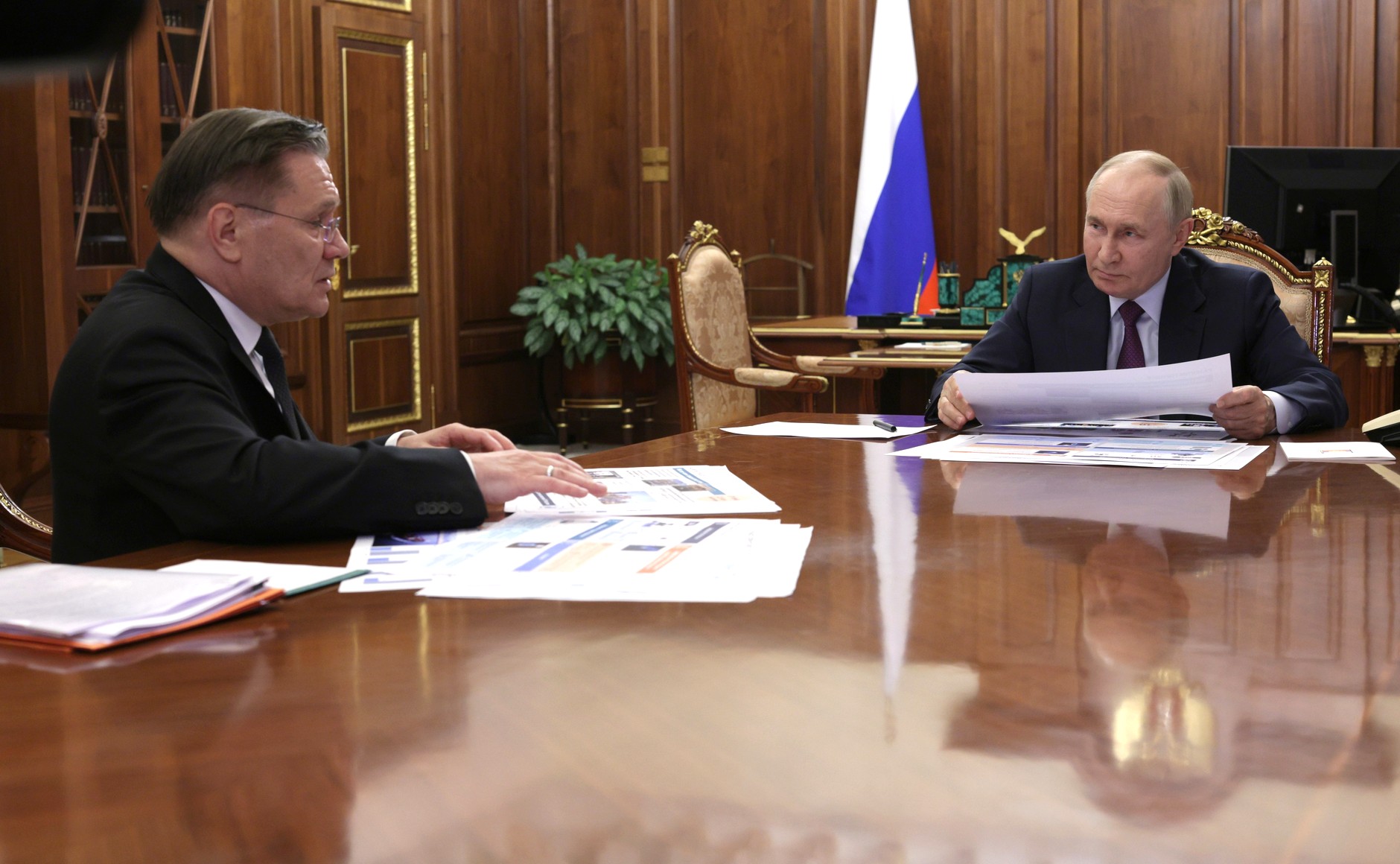
Kremlin Addressing Symptoms Instead of Causes of Coal Industry Downturn
Kremlin Addressing Symptoms Instead of Causes of Coal Industry Downturn
Executive Summary:
- Russian President Vladimir Putin approved a set of measures in May to support Russia’s coal industry, including subsidies for transportation and exports, aimed at addressing the challenges posed by shrinking global demand, the transition to renewable energy, and economic sanctions.
- More than half of Russia’s coal companies are now unprofitable, and regions such as Kemerovo and Khakassia are experiencing mine closures, strikes, and layoffs, threatening local economies and prompting political leaders to seek emergency support.
- Moscow’s reliance on subsidies, export reorientation, and state control overlooks market contraction, infrastructure bottlenecks, and shifting buyer preferences. Domestic political interests and lobbying continue to drive expansion policies that will be ineffective in the long term.
On May 7, Russian President Vladimir Putin approved a set of measures to aid Russia’s ailing coal industry, including subsidies for coal transportation and export guarantees (Kommersant, May 13). These measures are unlikely to be sufficient to salvage the increasingly unprofitable industry, given the structural nature of the crisis driven by economic sanctions and the rapid decline in global coal consumption. The Kremlin is ignoring the factors driving the decline of the coal industry, instead artificially bolstering the industry through government subsidies.
The European Union and the People’s Republic of China (PRC), Russia’s top coal customers, have been pursuing policies to reduce their coal consumption since well before Russia’s full-scale invasion of Ukraine in February 2022 (European Commission, January 21, 2014; see China Brief, January 23, 2015). Russian coal producers did not take this policy shift seriously, especially given the industry’s unexpected profits from 2022 to 2023, resulting from the global energy crisis (The Insider, April 30; Oil Price, May 8). In 2024, however, the scope of challenges faced by Russia’s coal industry became clear. The industry suffered a net loss of 112.6 billion rubles ($1.4 billion) in 2024, following a net profit of 374.7 billion rubles ($4.8 billion) in 2023. The percentage of unprofitable coal-producing companies in Russia rose from 31.5 percent in 2023 to 53.3 percent in 2024 (Interfax, March 5). According to Russia’s Ministry of Energy, 27 coal companies approached the threshold of bankruptcy, and 62 companies suffered “higher than average” net losses in 2024 (Vedomosti, March 27).
Two Russian regions with significant non-ethnically Russian populations have been particularly affected by the coal industry’s crisis. In the Kemerovo oblast’s Kuznets coal basin (Kuzbass), 57 percent of coal companies have become unprofitable, leading to shutdowns, unpaid salaries, and layoffs (Central Bank of Russia, April 16). In October 2024, coal miners at the Inskaya mine in the Kuzbass basin protested unpaid salaries, employing tactics similar to those used in the late 1980s and early 1990s, such as strikes, including hunger strikes (Zabastcom, October 21, 2024; Novaya Gazeta Evropa, February 21). In the Khakassia Republic, more than 13,000 people are directly involved in coal production, and several supporting sectors depend on coal mining. The local political leadership has openly expressed deep concern about the situation and is taking steps to bolster the industry, allowing coal enterprises to stabilize their production (Rodnoy Tvoy Cemeyniy, April 24).
Different groups in the Russian vertical of power have suggested solutions to address the plight of the coal industry. The Ministry of Energy’s plan features $2.3 billion in direct coal subsidies, which will cut sea transport costs by 1.5–2 times, keep eastbound rail transport costs below 2024 levels, suppress transportation tariffs, and provide investment subsidies for coal mining companies (Vedomosti, March 27; RBC, April 14).
Government agencies, including the Ministry of Economy, the Ministry of Transport, and the Federal Tax Service, along with relevant experts, have formulated three main steps to assist the coal mining industry. First, they proposed reorienting exports. According to finance expert Oleg Abelev and Deputy Director of the Institute for Economic Growth Anton Sviridenko, Russian coal companies are forced to sell their product at a discount in Asia due to a highly competitive market there (Kommersant, March 19). Russia should reorient its coal exports to Serbia, Türkiye, the Middle East, and North Africa, where Abelev claims there is viable interest in Russian coal (Kommersant, March 19). Second, the Kremlin may give direct management of bankrupt coal mining enterprises to state-affiliated structures, such as the VEB.RF, a Russian state development corporation and investment company (Kommersant, January 20). Finally, the government is considering restricting new licenses for coal mining operations, especially in areas that are geographically distant from main export markets (Kommersant, January 20).
Both sets of government solutions heavily rely on continued subsidization of the coal mining industry, thereby avoiding the root causes of the crisis. First, Russian coal is no longer needed on the global market in the same quantities as in the past. The global reorientation toward renewable energy and less ecologically damaging sources of energy—such as liquified natural gas (LNG)—means that both developed and developing economies are consuming less coal. Coal prices have accordingly fallen, shrinking profit margins, making coal mining less economically sustainable. At the same time, Russia’s top coal customer, the PRC, is replacing Russian coal with Australian, Indonesian, and Mongolian coal, which is less expensive due to logistical advantages (News.ru, January 9). The PRC, India, and Türkiye are simultaneously imposing tariffs and other regulations on foreign coal to protect their domestic coal industries (Kommersant, December 27, 2023). This is particularly noteworthy in the case of the PRC, which introduced tariffs of three to six percent on Russian coal in 2023. Coal from other countries was not affected by this policy, baffling the Russian expert community (Kommersant, December 27, 2023).
Second, Russian coal must overcome infrastructure and logistics issues to reach foreign markets. Between 2022 and 2023, Russia’s exports to the PRC grew exponentially, creating a bottleneck within Russia’s eastbound transportation system (The Moscow Times, August 14, 2024). The issues persist in 2025, and the Kremlin has had to make tough choices about which cargoes to prioritize (Vedomosti, January 19). According to Russian Railways (RZD), transporting other types of fuels and hydrocarbons is 1.8 times more profitable than transporting coal (RBC, October 8, 2024). RZD’s quotas for eastbound transportation of coal are projected to cause the railway losses exceeding 200 billion rubles ($2.5 billion) in 2025 (RBC, January 31).
Third, Western economic sanctions are limiting the profitability of Russian coal. Even though the EU embargo on Russian coal would have had limited effects, given the European Union’s already decreasing consumption of Russian coal, broader Western, primarily U.S., sanctions have had a visible secondary effect by discouraging foreign banks from collaborating with Russian companies (Kommersant, October 9, 2024).
Moscow has yet to propose a solution that addresses the underlying causes of the coal industry’s declining profitability. While Russia’s ability to export coal to the west and east is collapsing, the Kremlin has launched major initiatives in the Sakha Republic and Primorsky krai to boost their coal processing and production (Aksi, April 17). Existing coal storage facilities have already exceeded their capacity, and it is unclear how Russia will handle excess coal (Aksi, April 17). Some Russian experts believe that this seemingly illogical decision is an outcome of internal political games and lobbying. The Russian coal industry has a powerful patron in Sergey Tsivilyov, the former governor of the Kemerovo oblast and the current Minister of Energy, as well as a member of the Bureau of the Supreme Council of the United Russia party (The Insider, April 24). Tsivilyov and the governors of coal-producing regions are key proponents of coal production in the Russian government, exerting pressure on the RZD to reduce transportation costs for coal (Interfax, March 17; The Insider, April 24).
The Kremlin has yet to propose an effective policy solution to address the deep crisis in its coal industry. In the Kemerovo and Irkutsk oblasts, as well as the Sakha, Khakassia, and Tuva republics, substantial parts of local budgets rely on taxes paid by coal mining corporations, and a sizable portion of the local labor force is employed in the coal mining industry. In the short term, the Russian state is likely to avoid backlash from a coal-related economic downturn in these economically and socially unstable regions through coal subsidies, payouts, and military recruitment. In the longer run, however, it is unclear how Moscow will address looming bankruptcies and the potential demise of the entire coal mining industry.


